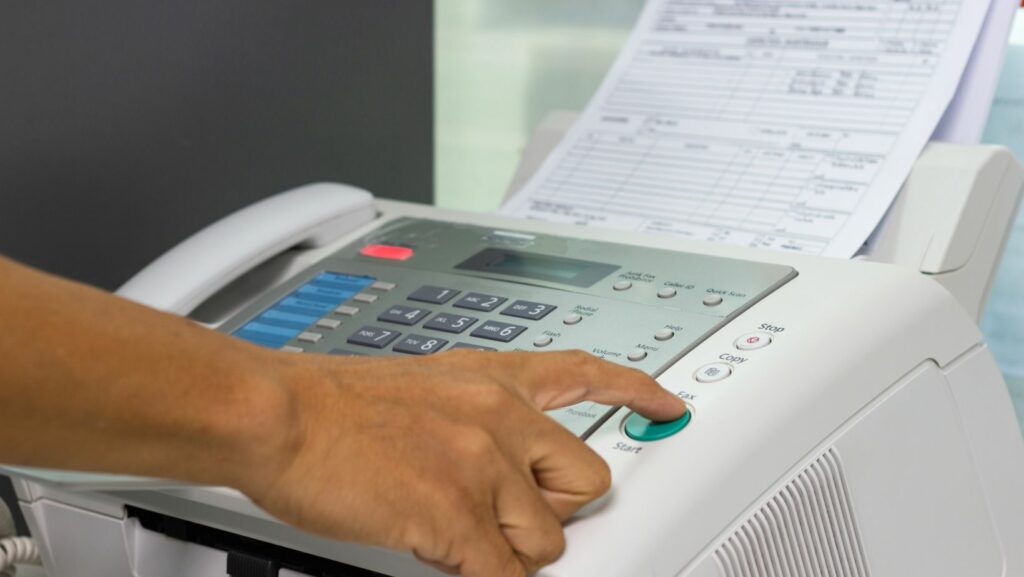Faxing, once considered a relic of the past, has experienced a remarkable evolution in recent years. As we continue to march forward in the digital age, the humble fax machine has adapted and transformed, proving that it’s not ready to be relegated to the archives just yet. In this article, we’ll explore the exciting developments that have reshaped faxing, making it more efficient, secure, and in tune with modern communication needs.
The Demise of Traditional Fax Machines
Traditional fax machines, once a staple in offices around the world, have become relics of a bygone era. Bulky, noisy, and notorious for paper jams, these machines took up valuable space and were often more trouble than they were worth. The evolution of faxing has seen a decline in the use of these outdated devices, as businesses seek more efficient and sustainable alternatives.
The environmental impact of traditional faxing, with its reliance on paper and ink, has been a significant factor in their decline. Additionally, the cumbersome process of printing documents before faxing and dealing with physical copies has given way to digital solutions that streamline the entire process. The shift away from traditional fax machines signifies a broader trend in embracing digitalization and reducing the carbon footprint associated with outdated technologies.
Digital Fax Services
Digital fax services have emerged as the modern solution to the limitations of traditional fax machines. Platforms like eFax, HelloFax, and FaxBurner have transformed faxing into a digital, user-friendly experience. These services allow users to send and receive faxes directly through email or online interfaces, eliminating the need for a physical fax machine altogether.
Digital fax services offer advantages such as the ability to send faxes to multiple recipients simultaneously, automatic document storage, and easy retrieval of past faxes. They have effectively bridged the gap between traditional faxing and the digital age, making it easier for businesses to adapt to changing communication norms.
Mobile Faxing
Mobile faxing apps represent a pivotal development in the evolution of faxing, aligning the process with the mobile-centric lifestyle of today. With apps like CamScanner, Genius Fax, and iFax, users can turn their smartphones and tablets into portable fax machines. This shift not only increases accessibility but also allows professionals to manage their documents while on the move.

Mobile faxing apps often come equipped with features like document scanning using the device’s camera, annotation tools, and seamless integration with cloud storage services. This integration with mobile technology has not only made faxing more convenient but has also positioned it as a versatile tool for individuals and businesses alike, breaking free from the constraints of physical locations and traditional office setups.
Integration with Cloud Services
One of the most significant advancements in the evolution of faxing is its seamless integration with cloud services. Modern faxing solutions recognize the need for efficient document management and have embraced the power of the cloud. Integrating faxing with cloud platforms like Google Drive, Dropbox, or Microsoft OneDrive has revolutionized how businesses handle their documents.
Cloud integration allows for the automatic storage of faxed documents in secure, easily accessible online repositories. This not only eliminates the need for physical storage space but also ensures that important documents are backed up and can be retrieved from any device with an internet connection. The collaborative nature of cloud platforms further enhances the efficiency of faxing, enabling multiple users to access, edit, and share faxed documents in real-time.
Enhanced Security Features:
Security has been a longstanding concern with traditional faxing, but the evolution of faxing has addressed these worries head-on. Modern fax solutions have implemented robust security features to ensure the confidentiality and integrity of transmitted documents.
Encryption protocols have been strengthened, safeguarding faxed information from interception or unauthorized access during transmission. Authentication mechanisms, such as secure login credentials and multi-factor authentication, provide an additional layer of protection. These measures are crucial, especially when dealing with sensitive information like legal documents, medical records, or financial transactions.

Furthermore, compliance with industry regulations and standards has become a focal point for modern fax services. Meeting and exceeding these standards not only instills confidence in users but also ensures that businesses can trust faxing as a secure means of communication. The integration of enhanced security features positions modern faxing as a viable option for businesses with stringent security requirements, dispelling the myth that faxing is an insecure or outdated method of communication.
Conclusion
Faxing has come a long way from its analog roots. The evolution of faxing, marked by the decline of traditional machines and the rise of digital solutions, has positioned this age-old communication method as a relevant and efficient tool in our modern, interconnected world. As technology continues to advance, so too will the capabilities of faxing, ensuring its continued presence in the ever-changing landscape of communication. Embrace the future of faxing – it’s more versatile, secure, and user-friendly than ever before.


More Stories
Cracking the Code: Writing SEO-Friendly Content Without Raising Google’s Spam Alarms
The Evolution of Conversational AI: Transforming Customer Experiences
Artificial Intelligence in Your Pocket: Innovating AI Mobile App Development